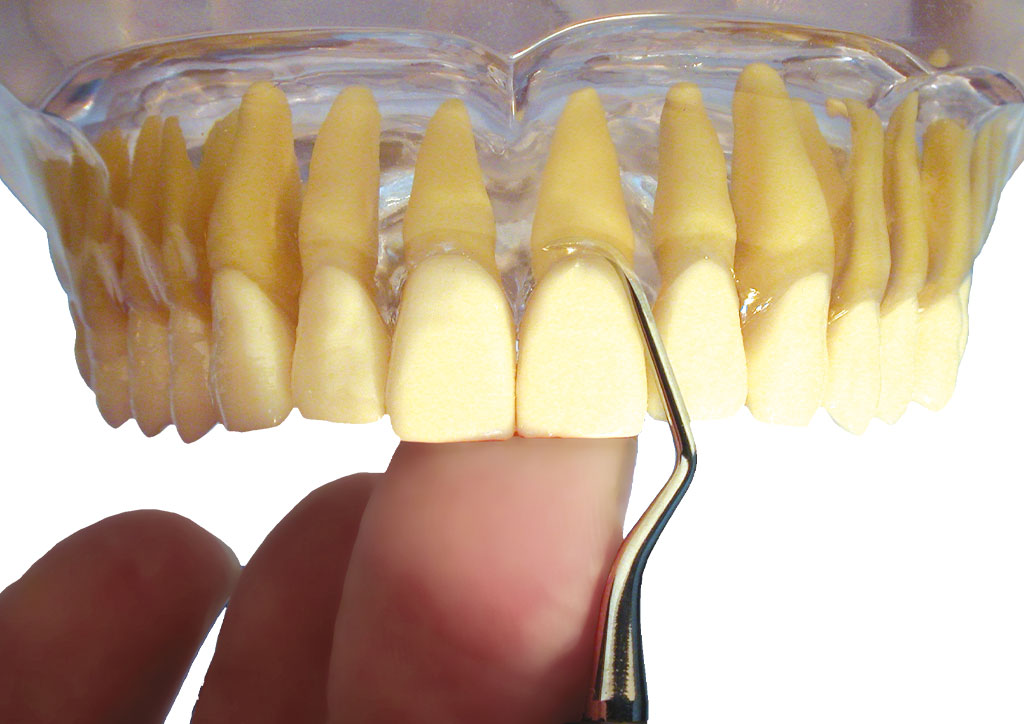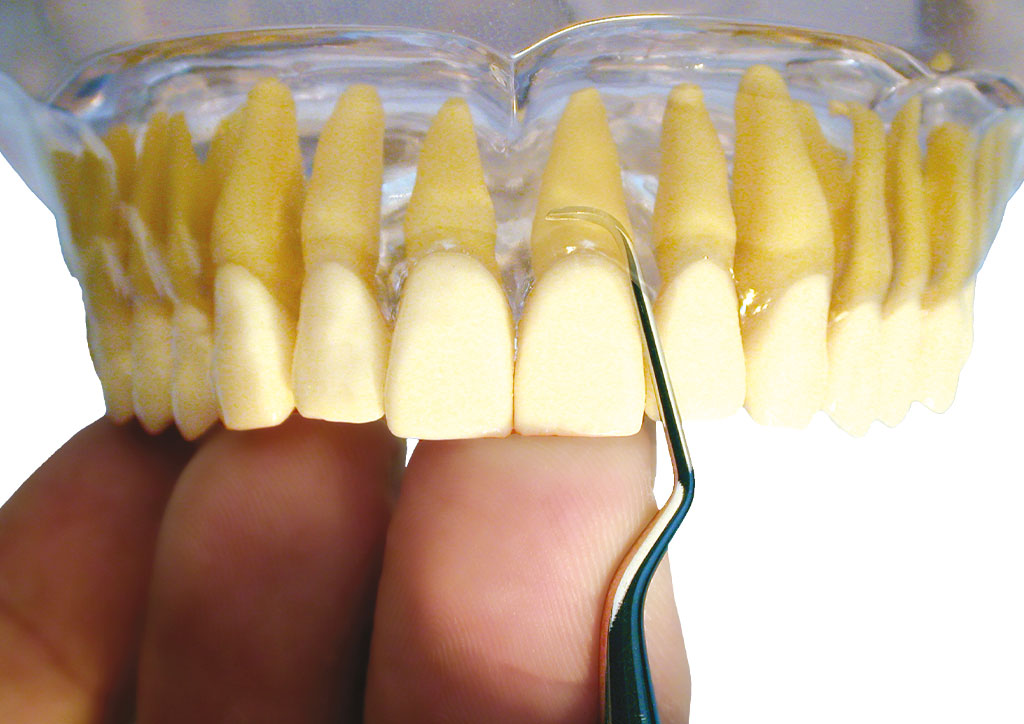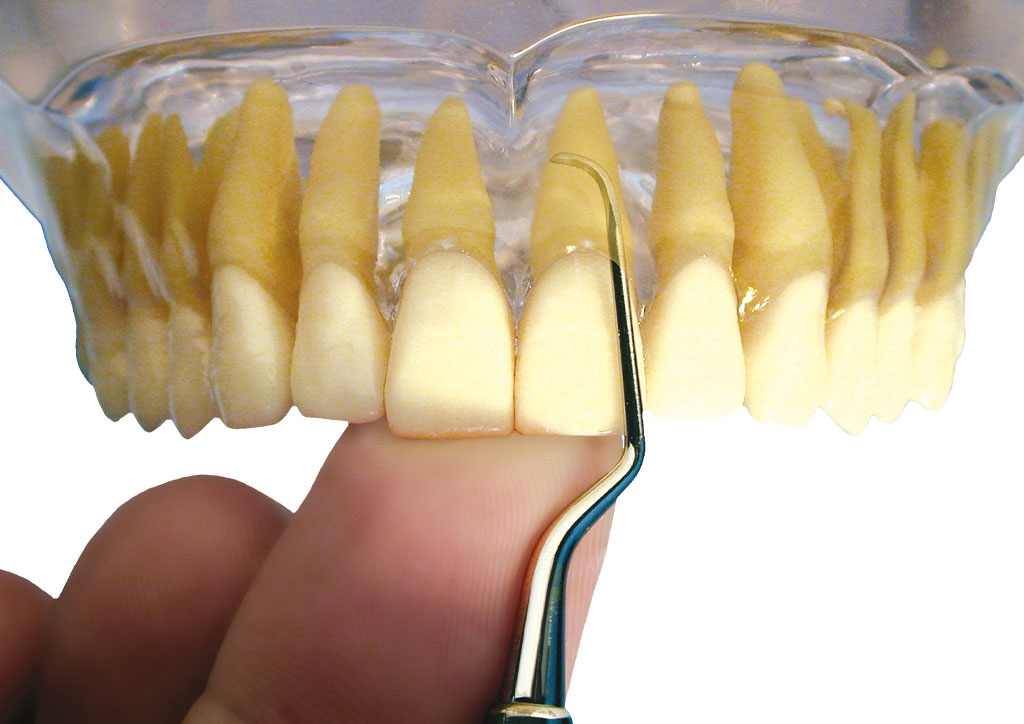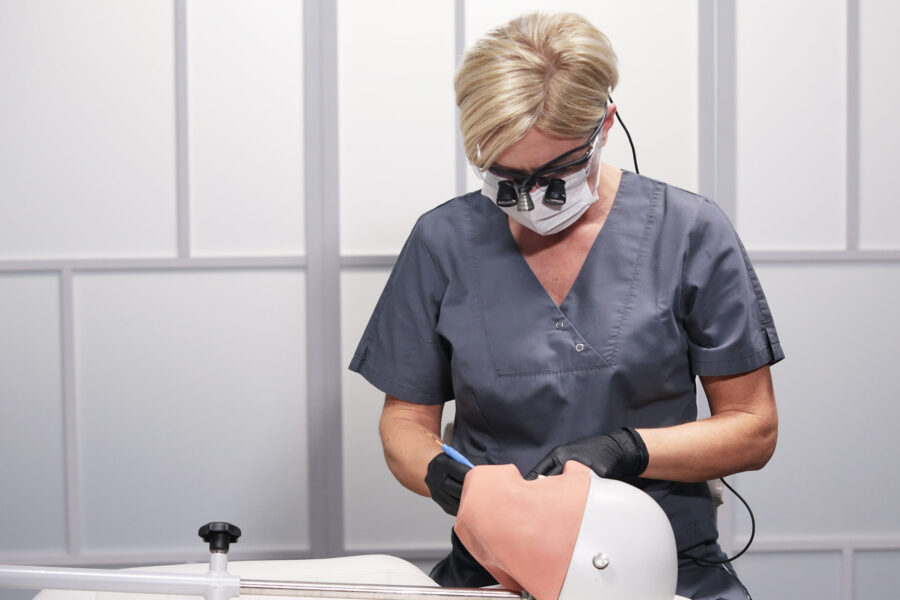Prophylaxis treatments without aerosols, or other ways prophylaxis can work. How can prophylaxis succeed if manual instruments are to dominate suddenly? Birgit Schlee DH report on their experiences and about their new prophylactic routine in their practice.
During the corona crisis, the question arose for us in the dental practice about whether we still wanted to offer prophylaxis…
How great is the risk of infection in treatments using aerosols?
This issue had already been the focus of an article by Dr. Graetz/Dr. Sonja Sälzer/Dr. Anica Tillner. Dr Anica Tillner (Kiel University) also addressed this problem in an in vitro study from 2016. Her study dealt with the effectiveness of the suction power of suction cannulas during biofilm removal and very impressively presented the aerosol distribution during machine scaling. According to the final recommendation, prophylaxis in risk patients should only be carried out using manual instruments. As we have already said, this has always been the case, and not just since COVID 19.
Due to the current hygiene regulations needed for practically every patient, this needed a complete rethink, starting with the use of instruments and devices through to the normal work processes. Since prevention and prophylaxis are particularly important for good oral health and a stable immune system in these times, we opted for a “minimized risk prophylaxis” without additional aerosol formation. Of course, it was also an enormous watershed moment for us at first in terms of our previous workflow. It seemed almost unimaginable to remove hard coatings and biofilm in the PDC as well as in the complete PA therapy without using any sonic or ultrasound devices and/or powder/water jetting. But we could pretty soon see that we were just going “back to our roots”! For both of us, working with manual instruments and traditional polishing has always been an integral part of the PDC so we didn’t really have to brush up on anything there.
What is there to consider? We would like to give a small overview of this here:
Manual instruments
More than ever, scaled PA probes are essential for careful diagnostics to determine the risk of disease and for targeted therapy decisions. From the preliminary examination, pocket depth measurement, professional tooth cleaning with SBI through to API, PA treatment and risk-oriented, supportive periodontal therapy (UPT) and on to evaluation. Since there is demand for working almost exclusively with handheld tools, the qualitative differences of the scalers and curettes available on the market can now be quickly recognized. Work is only ergonomical if you have really sharp instruments!
If you want to avoid joint pain or even carpal tunnel syndrome, at the end of the day you will be best advised to choose instruments which use nano-optimized XP Technology®. These instruments are significantly harder and therefore remain sharp longer. This allows pressureless work with significantly increased treatment comfort both for the therapist’s joints and the patient. You no longer need to grind these instruments, and that is also noticeable in their narrow working ends.
Scalers and curettes are selected individually depending on the patient and the treatment requirements. The proximal surfaces and exposed root areas are often especially difficult to reach. Precision working ends facilitate ideal guidance for operating gently in the sulcus area. For example, universal curettes can be used subgingivally, but Gracey curettes have proven to be gentler. The Deep Pocket curettes with their 3mm extended shaft or the Access curettes with a 3mm extended shaft and 50% shorter working end are suitable for particularly narrow or deep pockets. Scalers or universal curettes are used to remove supragingival plaque.
Anyone who is unsure about this area will have an opportunity to take advantage of the training program offered by Young Innovations. It offers in-house training courses on this topic throughout Europe.
”Since my training as a DH, I have mainly been working with XP instruments from American Eagle Instruments. Why? Because I have always focused on minimally invasive work. The precision design of the working tips offers me enormously highly tactile sensitivity when curetting deep pockets so that I often manage without a probe. I also find added value in the ergonomic feel of the instruments as seen in their extremely lightweight and grippy handle, meaning that your hand doesn’t get tired or strained so quickly. In active PA therapy, I like to work with a large and varied range of curettes so I therefore find the color coding on the plastic handles optimal as that allows me to identify the instruments quickly during treatment. This is already proving to be a real advantage in these difficult times, because time, efficiency and effectiveness are now in great demand.
Birgit SchleeDH








